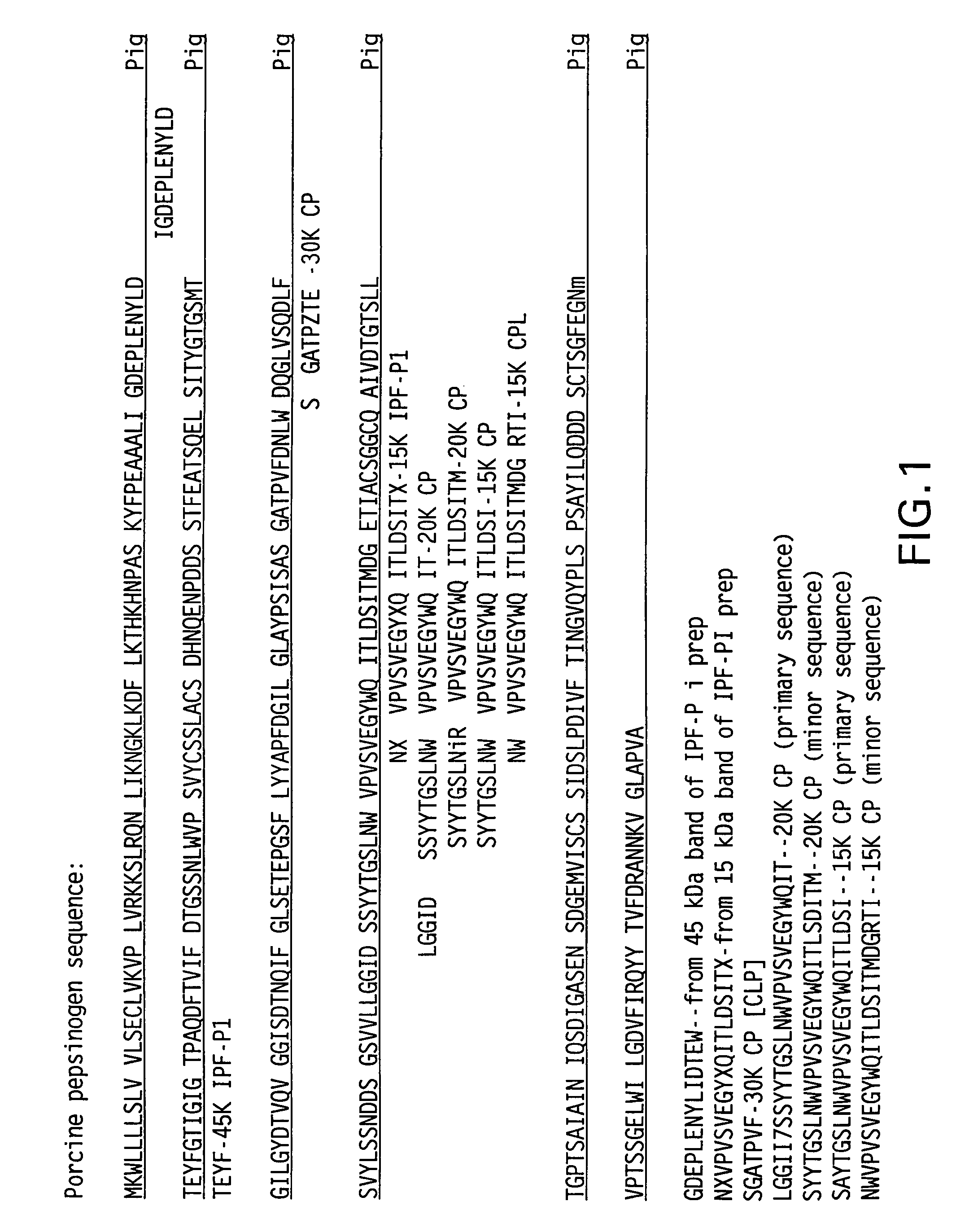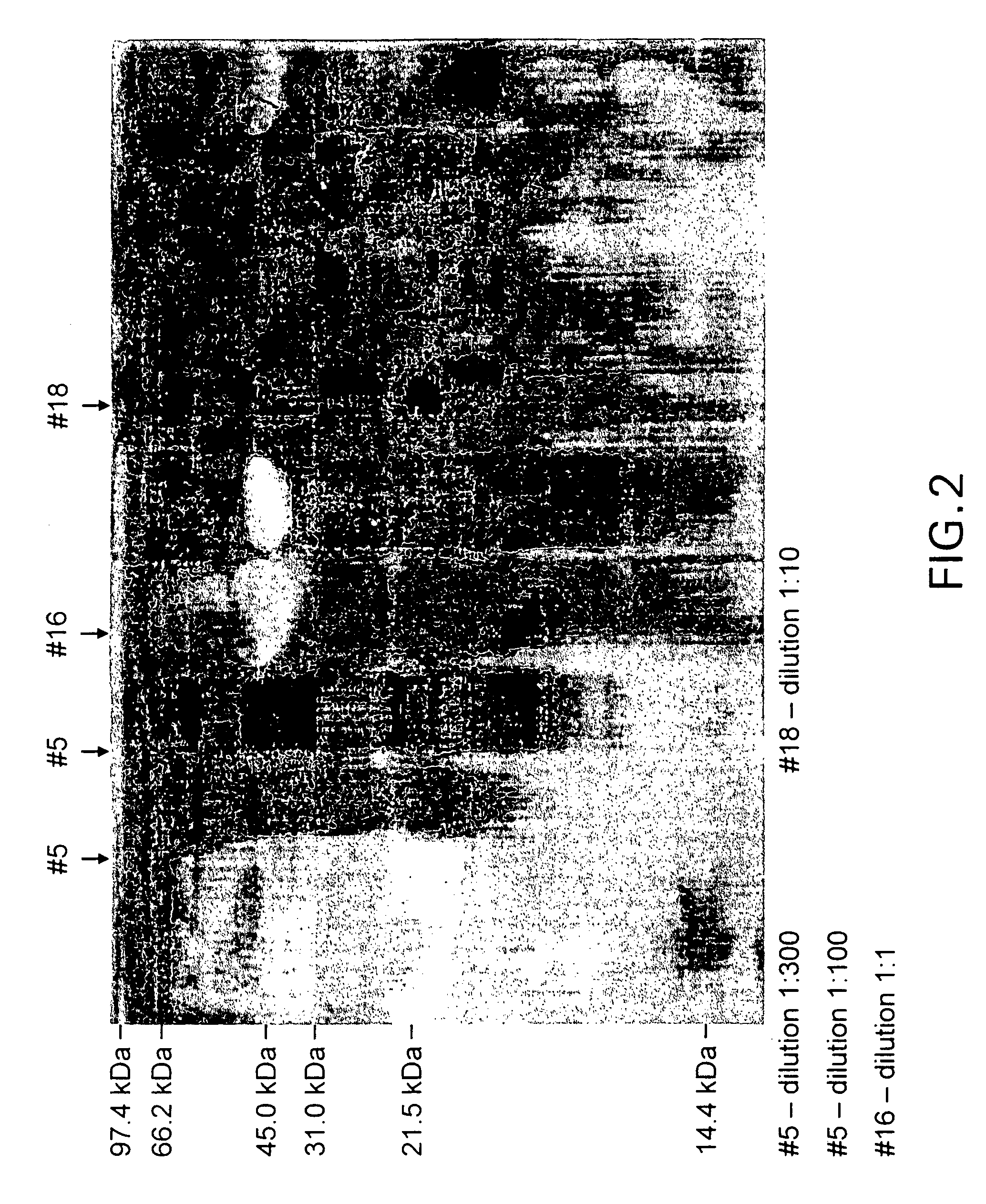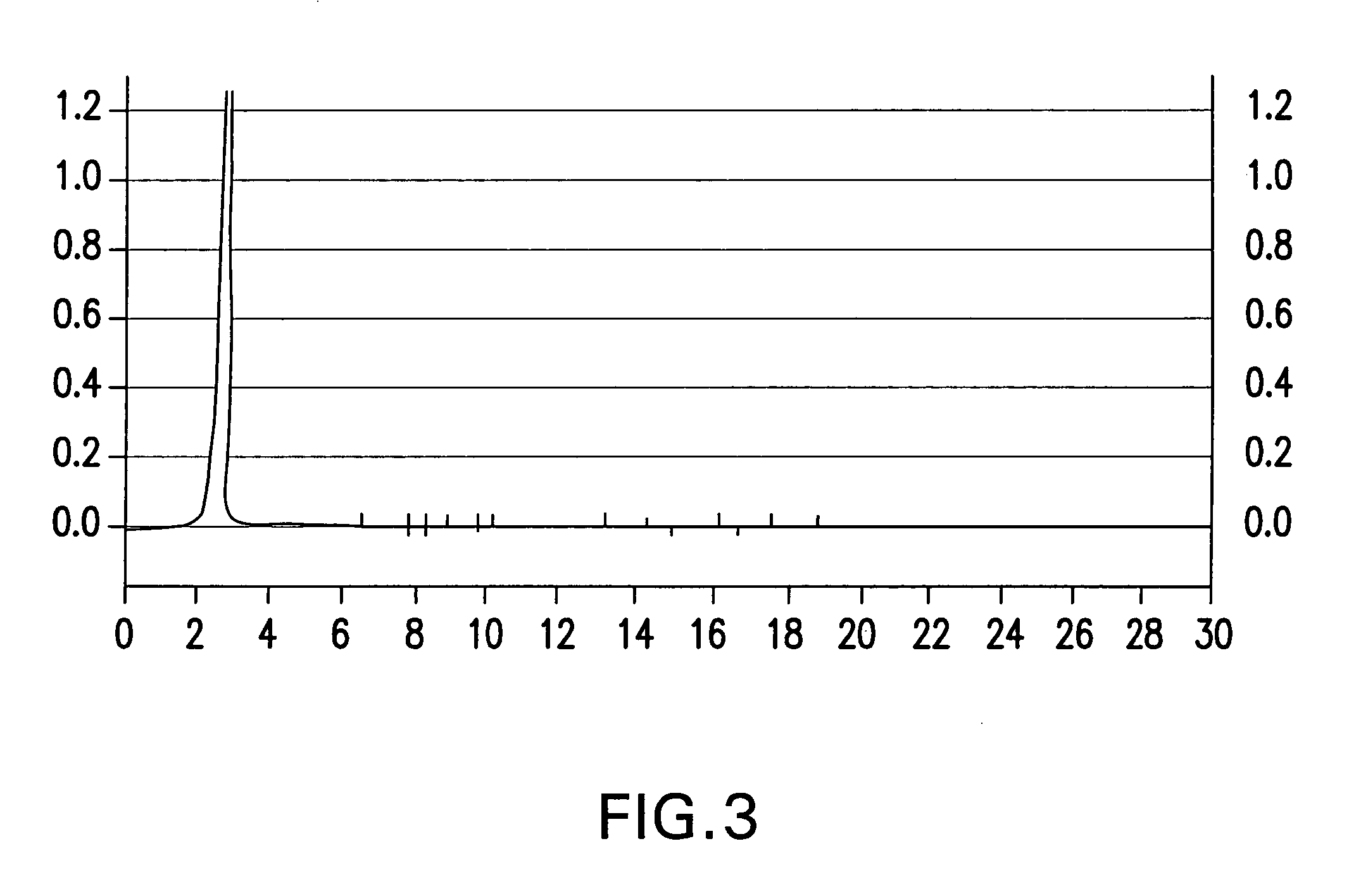Irreversibly-inactivated pepsinogen fragment and pharmaceutical compositions comprising the same for detecting, preventing, and treating HIV
a technology of inactivated pepsinogen and fragment, which is applied in the direction of peptides, enzymology, biological material analysis, etc., can solve the problem of difficult neutralization of this virus
- Summary
- Abstract
- Description
- Claims
- Application Information
AI Technical Summary
Benefits of technology
Problems solved by technology
Method used
Image
Examples
examples
Isolation and Purification of Irreversibly-Inactive Pepsin Fraction
[0024]The following Examples show the isolation, purification, and characterization of IPF from active pig pepsinogen. Also illustrated is IPF binding activity.
example i
Isolation and Inactivation of Pepsinogen Fragment
[0025]All the buffers and solutions used in this section were sterilized by filtration. If needed, the buffers (0.2 N or 0.1 N HCl) were used to adjust the solutions. All the chemicals, including the distilled water, for the preparation of the buffers and solutions were USP Grade. The ratio of the pepsin to the buffers was 1:4 (weight / weight).
[0026]IPF was isolated from active pepsin (Sigma 1:10000) by ammonium sulfate precipitation with centrifugation at 4° C. The lyophilized pepsin powder was dissolved in 0.14M sodium chloride (NaCl), 0.05M sodium acetate (CH3COONa . 3H2O), 0.05M sodium citrate (C6H5O7Na2.2H2O), and 0.20N HCl (pH 2.8-3.2) buffer. The pH of the active pepsin suspension was then increased to 6.2-6.6 and the suspension was incubated for 30 minutes. The suspension was then precipitated with a saturated solution of (NH4)2SO4. After degradation, the mixture was centrifuged (8000 RPM at 4° C.) for 60 minutes and the supern...
example ii
Purification and Recovery of Irreversibly Inactivated Pepsinogen Fragment
[0027]The purification of IPF included the following steps: dialysis, centrifugation, gel filtration, and reversed phase HPLC.
[0028]After dialysis, the low molecular weight dialysate was centrifuged at 15,000 rpm at 4° C. for 60 minutes (Beckman rotor) with precipitation of the residual ammonium sulfate. The product was purified by gel filtration to recover purified IPF from the crude mixture, and then purified by filtration on Bio-gel P10 or Sephadex G-75 gels (from Pharmacia Uppsala, Sweden), or 0.2μ SFCA membrane (Nalgene Labware, Rochester, N.Y.). Further purification was achieved by reversed phase high-performance liquid chromatography in an RP-HPLC system GOLD (Beckman) on C-18 columns (RP Ultrasphere 10 mm Spherical 80 A Preparative 21.2×150 mm) using gradient 30% acetonitrile diluted in sterile water, HPLC-grade at 15% methanol HPLC-grade mobile phase. Detection 254 nm; flow rate 0.850 ml / min., solvent ...
PUM
| Property | Measurement | Unit |
|---|---|---|
| molecular mass | aaaaa | aaaaa |
| pH | aaaaa | aaaaa |
| weight | aaaaa | aaaaa |
Abstract
Description
Claims
Application Information
 Login to View More
Login to View More - R&D
- Intellectual Property
- Life Sciences
- Materials
- Tech Scout
- Unparalleled Data Quality
- Higher Quality Content
- 60% Fewer Hallucinations
Browse by: Latest US Patents, China's latest patents, Technical Efficacy Thesaurus, Application Domain, Technology Topic, Popular Technical Reports.
© 2025 PatSnap. All rights reserved.Legal|Privacy policy|Modern Slavery Act Transparency Statement|Sitemap|About US| Contact US: help@patsnap.com



